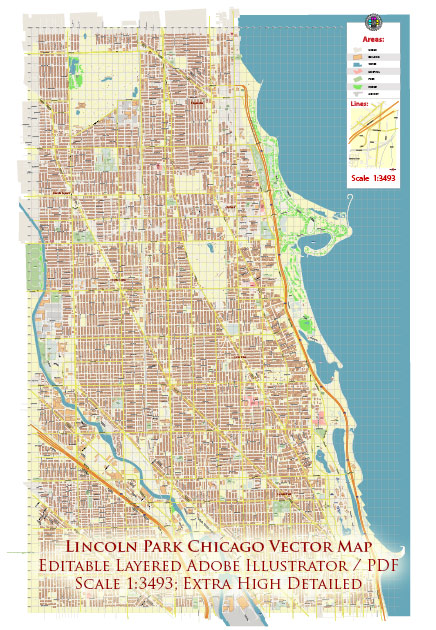Lincoln Park, located in Chicago, Illinois, is a prominent urban park that spans over 1,200 acres along the shoreline of Lake Michigan. While it’s not a botanical garden in the traditional sense, it features a wide variety of flora and fauna. Here is a general description of the botanical aspects of Lincoln Park:
- Trees: Lincoln Park is home to numerous tree species, including oak, maple, elm, and various conifers. The park is characterized by tree-lined pathways and avenues, providing shade and a picturesque setting for visitors.
- Flower Gardens: Lincoln Park boasts several flower gardens, including the Alfred Caldwell Lily Pool and the Lincoln Park Conservatory. These areas showcase a diverse collection of flowers and plants, with seasonal displays that change throughout the year.
- The Alfred Caldwell Lily Pool: This hidden gem is a designated National Historic Landmark and features water lilies, native aquatic plants, and a beautiful garden designed by Alfred Caldwell. It’s a tranquil and scenic spot within the park.
- Lincoln Park Conservatory: The Lincoln Park Conservatory is a stunning glasshouse with four distinct rooms, each simulating a different climate. Visitors can explore tropical, desert, fern, and show house environments that house a wide array of exotic and rare plant species.
- Wildlife Habitat: In addition to its plant life, Lincoln Park is home to various wildlife species. Birds, squirrels, and other animals can be spotted throughout the park, especially in its wooded areas and by the pond.
- Lakefront and Beach: The park’s eastern boundary is the Lake Michigan shoreline, and there are several beaches within the park, making it a beautiful location to enjoy the lake and its surroundings.
- Prairie Restoration: Lincoln Park also has areas dedicated to prairie restoration efforts, featuring native Illinois plants and grasses. These areas contribute to the park’s ecological diversity.
- Walking and Biking Paths: Throughout the park, there are well-maintained walking and biking paths that wind through the various landscapes and offer a chance to appreciate the botanical beauty of the park up close.
While Lincoln Park is primarily known as a recreational space with a wide range of amenities, its botanical features add to the park’s appeal and provide visitors with the opportunity to experience nature within an urban setting. Please note that specific displays and plantings may change over time, so it’s a good idea to check with the Chicago Park District or Lincoln Park Conservatory for the most up-to-date information on the botanical attractions in Lincoln Park.


 Author: Kirill Shrayber, Ph.D.
Author: Kirill Shrayber, Ph.D.